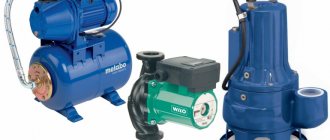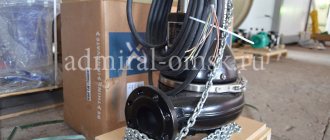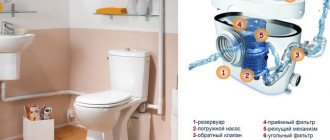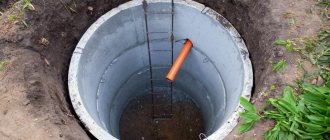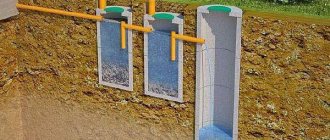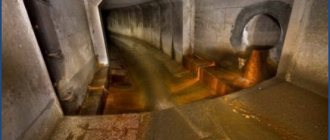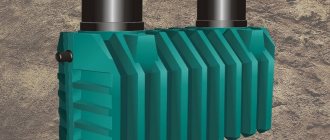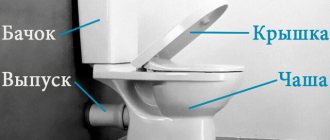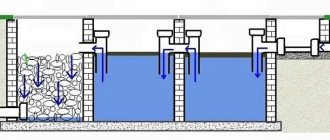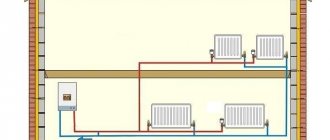In various spheres of human activity, the creation of a vacuum is required. This term characterizes the state of the gas phase, the pressure of which is below atmospheric. It is measured in millimeters of mercury or pascals. Rarefaction of gases occurs when a substance is forcibly removed from devices having a limited volume. A technical device designed for these purposes is called a vacuum pump. It can be used independently or included in more complex systems.
General information
Vacuum (from the Latin vacuum - emptiness) is the state of gas or steam at a pressure below atmospheric.
Conventionally, different levels of vacuum are distinguished:
- Low - pressure range greater than 100 Pa
- Medium – pressure range greater than 0.1 Pa and less than 100
- Large – pressure range from 10-5 Pa to 0.1 Pa
- Ultra-high – pressure more than 10-5 Pa
With the modern development of equipment, creating a vacuum is not difficult at all. The simplest unit capable of creating a vacuum is a vacuum pump.
The operation of all types of pumps is based on one principle, namely displacement. It underlies the operation of all pumps of different volumes and methods of use. Displacement involves getting rid of gas from the working compartment. During the action, the pressure changes, and the gas elements move along the correct path. With the modern development of equipment, creating a vacuum is not difficult at all. The simplest unit capable of creating a vacuum is a vacuum pump.
There are types of pumps used in everyday life (for example, conveniently storing clothes or extending the shelf life of food). Knowing how the equipment operates will help you find a reliable device for creating space with rarefied air.
The efficiency of the pump is directly dependent on the quality of the displacement principle. The amount of vacuum that can be created in a closed atmosphere is affected by the tightness of the working compartment. This is achieved through spool valves, impeller and plate. The last two items can be found on the outside of the vacuum pump.
Vacuum in everyday life
A vacuum pump is also useful at home; using a manual vacuum pump to pump out air, you can clean clogged sewer pipes, preserve food, keeping it fresh for a long time, and pack things securely.
More recently, in order to keep food fresh, they were placed in the cold, then an instant freezer was invented, but oxygen was always present there, which, in contact with the food, oxidized it, limiting the storage time. And, relatively recently, household vacuum pumps were proposed.
With the help of these devices, it has become much easier to store fresh food, for example, fresh herbs, meat, fish, berries, fruits are placed in special containers or sealed packaging, the air is pumped out of the containers and food placed in the refrigerator is stored for a long time without freezing. In this form, the products do not lose their beneficial properties and taste.
Using a manual vacuum pump to pump air out of cans easily solves the preservation issue. This lid has a valve at the top through which air is pumped out of the can. The products are made of special food-grade durable plastics and are intended for repeated use. The lid has rubber seals at the bottom for tight contact with the jar. Everything is simple, but there are certain technical requirements:
- it is necessary that the surface of the edge of the neck of the jar is smooth;
- the lids do not boil, as the silicone seal may deteriorate.
To open the lids, simply press the valve on top of the lid and air will flow inside, allowing you to easily separate the lid from the neck of the jar.
Factors that indicate the correct operation of the vacuum pump
There are two necessary actions that absolutely any vacuum pump must perform. He must:
- Create a vacuum of a given depth while pumping out the gas element from the required space without interruption;
- Complete the first step in a clearly defined time.
If any point is not fulfilled, it will be necessary to connect an additional pump. For example, if the pressure of the required volume was not provided within a given period of time, a forevacuum type pump is connected. It allows you to reduce the pressure in the required amount to ensure a working atmosphere. This principle is similar to a serial connection. If the required pumping speed has not been obtained, it is necessary to connect a pump capable of creating the required vacuum at high speed. This type of operation is comparable to a parallel type connection.
The size of the depth created by the vacuum is affected by the tightness of the working atmosphere. It is provided by pump components, or rather by a special type of oil. Oil allows you not only to make the gaps tight, but also to close them tightly. A pump that is capable of creating a vacuum and has such a design is considered an oil pump. A dry pump is one that provides operation without oil. Dry pumps are more common in use because they do not require special maintenance.
The operating principle of a vacuum pump varies, as each type works differently. You can read more about the types about Types of vacuum pumps.
Let's look at the three most popular types of vacuum pumps used in production.
Application area
People have been studying the uniqueness of the vacuum environment for a long time.
Taking into account modern technological progress, vacuum installations have been significantly improved and are widely used in various fields of industry and in household appliances. Due to a special screw, the small dimensions of the device allow you to quickly create a high degree of vacuum in the environment.
Vacuum water pumps are considered economical and have various applications:
- in the manufacture of metal products with a dense structure without pores;
- in textile production, for quick drying without exceeding the temperature regime;
- when packaging dairy products, packaging meat and fish;
- in equipment with special requirements for a dry environment;
- for full operation of vacuum suction cups;
- in scientific laboratories of various fields;
- in the pharmaceutical field, medicine.
As you can see, the use of vacuum has a wide variety of purposes.
Rotary vane vacuum pumps
They are also called oil ones. Let us analyze information about the design and principle of operation of a rotary vane type vacuum pump.
These vacuum pumps look like a carefully polished cylinder with a rotor inside. The side gap varies in size because the axis of its inner part and the rotor do not touch.
The rotor has special motor plates. Thanks to their springs, they adhere to the body. In this way, the empty atmosphere is divided into parts of variable volume. During motor activity, the gas element creates a vacuum in the intake pipe. In pressure, there is excess pressure.
The plates contain antifriction components or special low-viscosity oils, since it is necessary to reduce plate friction. This makes it possible for a vacuum of great strength to appear. However, the pumped elements must be clean.
How to choose the most suitable option
Before choosing a vacuum pump, you need to study the unit.
Good device:
- Helps create optimal pressure levels, due to which the system functions longer and more efficiently.
- Convenient to use. It is desirable that the device is light, does not vibrate too much and is equipped with an indicator showing the amount of oil. This will make it easier to operate and maintain.
- Can be used in different conditions.
When choosing a unit for pumping mixture out of an air conditioner, you should take into account the dimensions of the pipeline, as well as the duration of operation.
Which vacuum pump to choose can be determined after studying the parameters and technical characteristics.
In order for the device to successfully fulfill its purpose, the purchase must be made taking into account:
- The period during which the device can operate without stopping. After all, the refrigeration circuit needs to be rid of excess air volume in a short time. Uninterrupted activity should be sufficient for the procedure to be completed. The vacuum formation process lasts no more than 30 minutes.
- Vacuum pump power. This indicator affects the operating speed of the device. If it is powerful enough, it will compensate for the short period of continuous operation.
- Refrigeration circuit route lengths. The power and continuity of operation of the unit depends on this indicator.
- Performance level. This parameter should be the same as the amount of air that needs to be removed from the system. Pumps from modern manufacturers have performance indicators of 40-150 cubic decimeters per minute. Taking this into account, we can conclude that the most powerful model, working without interruption, will pump out 4.5 cubic meters of air.
- Substances with which it will come into contact. Corrosive and caustic reagents cause damage to conventional vacuum. Therefore, for such situations you will need a device made from fluoroplastic materials that are resistant to chemicals. For non-aggressive vapors such as air or pure water vapor, standard pumps are suitable.
- The need for vacuum control. For simple operations, a device with an on/off toggle switch is suitable. If you need to strictly follow the regulations and control the process, you will need a unit with a vacuum controller connected to a computer.
- The need for a built-in capacitor. During vacuum distillation and drying, the device is filled with a certain amount of condensing vapor. It must be protected from the penetration of condensate drops inside. For this purpose, a special drop eliminator is used. To avoid condensate leaking out of the exhaust line of the device, the pump exhaust is connected to the flask by a receiver with a reflux condenser.
When choosing a pump for pumping out air, you need to take into account the maintenance features of the mechanism. If it works using oil, the parts wear out more slowly due to reduced friction between them.
But to maintain the strength and effectiveness of the device, maintenance must be performed every 12 hours. You also cannot do without using a cold trap, since oily fumes are released from the oil, settling on individual elements and complicating the operation of the pump. It is installed at the inlet so that oil vapor does not form in the vacuum.
If there is no cold trap, you should check the color of the oil that will be used to lubricate the pump to avoid damage. Another disadvantage is that they cannot be used in certain devices. This is especially true for those involved in the food industry, as oil particles can get onto the devices and from there onto the food.
With dry pumps the situation is much simpler. There is no possibility of lubricant contamination and no special maintenance is required. But they exhibit poor resistance to moisture and are sensitive to elevated temperatures.
Oil pumps are better because they can operate for a long time without interruption, and the parts wear out more slowly.
Diaphragm vacuum pumps
The flexible diaphragm is the main part of the operating principle of a diaphragm piston pump. The membrane is connected to the lever mechanism. It is created from the latest composite components that can withstand mechanics. The outer parts of the membrane are firmly attached to the body part, and the central part is bent under the influence of an electric and pneumatic drive. In this way, the inside of the chamber is alternately reduced and enlarged.
The volume changes together with the processes of obtaining and releasing new gaseous or liquid elements. When antiphase combines the actions of two membrane components, a continuous pumping mode occurs. Another element of the pump, namely valves, determines the correct direction of flow and distribution motives. The mechanism does not have elements that can rotate or experience friction and come into contact with the product being pumped.
Advantages of diaphragm piston pumps:
- Tightness
- Dry use for long periods of time
- Using a pneumatic drive in an explosive environment
- Economical.
Additional selection criteria
Devices are necessary in industry and everyday life. Depending on your needs, you should select the appropriate type of vacuum. The market is represented by products from Chinese, Spanish, Italian, and American manufacturers. They offer customers high-end units and small machines for home use.
Before choosing a vacuum pump, you need to choose a manufacturer.
Well proven:
- Vakuummash. It produces oil pumps that operate without liquid oil lubricants, as well as water ring-type products.
- ERSTEVAK. Manufactures devices that generate 1 mbar pressure. The company deals with water ring, vortex and vane-rotor mechanisms.
- BUSCH. It produces standard types of vacuum equipment in different price categories. Production is based on diffuse, turbomolecular, vortex and other popular mechanisms. The company has gained popularity all over the world with its mid- and high-end products.
- Refco. This is a Swiss company that produces reliable equipment used to service air conditioners.
- ERRECOM. This is an Italian company. It works with high-quality devices that have a long service life.
- CPS. An American company that produces a variety of equipment that can be used to service climate control equipment.
- VALUE, ZENSEN, Favorcool are Chinese brands. Their products are high quality and have decent technical characteristics. The quality of the equipment is no worse than European brands.
Without vacuum pumps, the efficient operation of many systems, including air conditioning, is impossible. It helps remove excess gases and vapors, thereby reducing the load on the compressor and increasing the service life of the unit. Before purchasing a unit, you should familiarize yourself with the characteristic features of the models. Preference should be given to reliable manufacturers.
Screw Vacuum Pumps
Screw-type pumps, like all others, operate using the displacement principle. However, unlike other devices, it occurs along a screw, which performs the work of rotation. The pumps have: a drive, 1-2 screw-shaped rotors and a stator of the desired shape. The pumped component does not return back because the parts are manufactured with great precision - this guarantees high-quality pump performance. As a result, excess pressure appears and a vacuum appears in the receiving part.
Pros of screw pumps:
- Minimum noise
- Pumping of components thanks to mechanics
- Even spending
It is important to choose the type of pump according to the requirements of your enterprise and industry. To do this, it is better to seek advice from specialists.
Advantages and disadvantages
Equipment operating on the principle of liquid displacement has numerous advantages, which undoubtedly affects its popularity in the market.
The advantages of vacuum pumps include the following:
- work autonomy;
- possibility of serial connection of several installations;
- excellent environmental performance;
- minimum noise level;
- good speed;
- maintainability and ease of maintenance;
- reliability of the design.
The disadvantages of this type of equipment include its increased sensitivity to the purity of the working fluid. Most types of such pumps can only work with clean water without silt and sand.
In some cases, it is even necessary to pre-install filter columns and a sand trap, which eliminates the failure of expensive equipment due to contamination and jamming.
